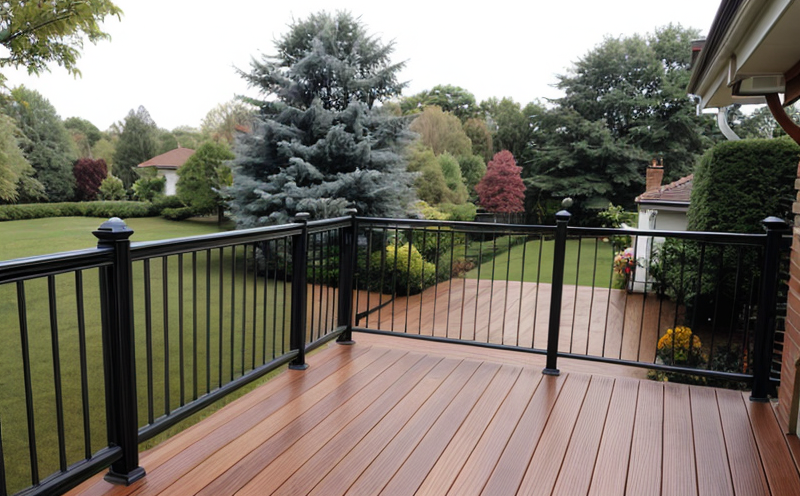Handrail and Balustrade Inspection
The inspection of handrails and balustrades is a critical aspect in construction and building safety. These elements play a vital role in ensuring the protection of occupants by preventing falls and injuries. Compliance with relevant standards ensures that these structures meet required strength, durability, and aesthetic specifications.
Handrails and balustrades are installed to provide stability and support, particularly in areas where there is a risk of accidental falls such as stairs, balconies, walkways, and ramps. They must be constructed from materials capable of withstanding the expected loads without deformation or failure over time. The inspection process involves multiple steps that ensure the integrity, safety, and compliance of these structures.
The first step in handrail and balustrade inspection is ensuring that the materials used meet the specified requirements. This includes verifying the type of metal, wood, glass, or other materials used, their grade, and any special treatments applied to them (such as galvanization). The integrity of these materials can be assessed using non-destructive testing methods like magnetic particle inspection for welds or visual inspections for surface defects.
Load-bearing tests are conducted to determine the structural integrity of handrails and balustrades. These tests simulate real-world loading conditions, ensuring that the structure can support its intended load without any risk of failure. For instance, a handrail designed to withstand 100 kg of force must be tested under this load to ensure it does not deform or break.
Visual inspections are also crucial in identifying any visible defects such as cracks, splits, or loose connections that could indicate potential safety hazards. These inspections should cover all critical points where the handrail meets the structure and where it is fixed, ensuring no weak spots exist.
Another important aspect of inspection is the check for compliance with relevant standards. In Europe, this includes adhering to EN 12458-3:2016 and EN 1991-1-5:2004, which provide guidelines on design and construction details for handrails and balustrades in buildings. These standards ensure that the structural components meet specific performance criteria related to load capacity, stability, and durability.
The aesthetic aspect of handrails and balustrades is also important as they are often visible fixtures within a building or structure. Their design should complement the overall architectural style while maintaining functionality. This includes checking for uniformity in height, spacing between balusters, and continuity along the length of the handrail.
Regular maintenance schedules contribute significantly to extending the lifespan of these structures. Routine inspections help identify any issues early on, allowing prompt repairs or replacements before they become critical problems. Proper cleaning and protection against environmental factors such as moisture and sunlight can also enhance their longevity.
Applied Standards
The application of relevant standards ensures that handrails and balustrades are designed, manufactured, installed, and maintained to a high level of safety and performance. For example:
- EN 12458-3:2016 provides specific requirements for the design and construction details of handrails and balustrades in buildings.
- ASTM F1972-19 outlines procedures for testing railings, stairway treads, and similar products to determine their resistance to simulated impact forces from a falling body.
- BSEN 1991-1-5:2004 covers the structural design of buildings and includes sections relevant to handrail and balustrade safety.
These standards provide detailed guidelines that cover not only the mechanical properties but also the aesthetic and functional aspects required for these structures. Compliance with these standards ensures uniformity in quality across different projects, enhancing overall building safety and reliability.
Quality and Reliability Assurance
The process of ensuring high-quality handrail and balustrade inspection involves several key steps. Quality assurance (QA) focuses on preventing defects during the manufacturing, installation, and maintenance phases. This includes:
- Conducting thorough inspections at every stage.
- Implementing stringent quality control measures to catch any issues early.
- Regularly updating inspection protocols based on feedback from real-world performance data.
Reliability assurance (RA) ensures that the structures continue to perform safely and effectively over their intended lifespan. This involves:
- Performing regular maintenance checks.
- Monitoring for signs of wear or damage.
- Implementing a robust replacement schedule when necessary.
By integrating QA and RA into the inspection process, we can ensure that handrails and balustrades remain safe and reliable throughout their service life, providing continuous protection to building occupants.
Customer Impact and Satisfaction
The impact of high-quality handrail and balustrade inspection extends beyond just safety compliance; it significantly influences customer satisfaction. Ensuring that these structures meet or exceed industry standards not only enhances the aesthetic appeal but also boosts confidence in the overall building’s quality.
Customers, including property owners, tenants, and visitors, benefit from knowing that they are protected by robust and reliable handrails and balustrades. This can lead to increased trust in the contractor or developer responsible for construction, fostering positive relationships and potentially attracting more business.
In terms of safety, satisfied customers are less likely to experience accidents or injuries, thereby reducing liability risks for property owners and managers. Moreover, compliant structures contribute positively towards sustainable development goals by maintaining long-term functionality without frequent replacements.





